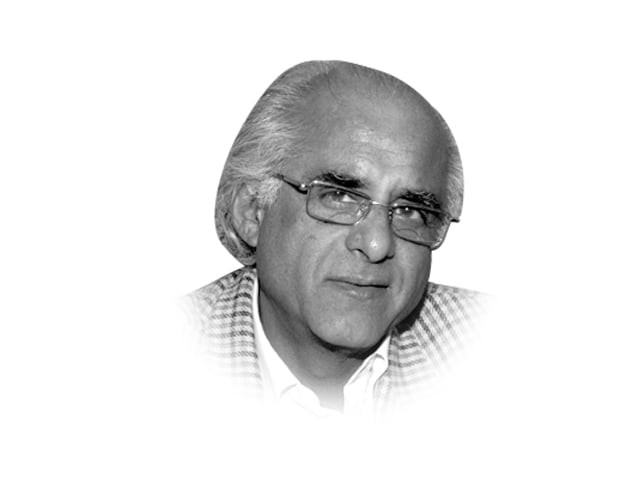The Alafis’ refuge
About an hour after leaving the transport and grinding ever upward through Kech Bund one comes to Kussui Kalat.

The writer is author of Jhelum: City of the Vitasta (Sang-e-Meel, 2005)
salman.rashid@tribune.com.pk
Just north of the junction of the two rivers, the small village of Shekhan is where one leaves the Turbat-Mand high road and goes north along the dry bed of the Shorma stream. The country is wild and desolate and possessed of a savage beauty. Views to the north are limited by the bleak, treeless crags of the Kech Bund that nowhere rise higher than 1,166 metres above the sea; to the east and west, the valley is fairly wide and dotted with trees and bushes that grow only in arid conditions.
But once one enters the folds of the Kech Bund, the sense of claustrophobia is overpowering. At some point, one’s guide will leave his motorcycle and lead one into a narrow chasm. Climbing upward through this dry water channel, one notices ruined stone turrets positioned at short intervals.
About an hour after leaving the transport and grinding ever upward through a confined and dusty gully, one heaves oneself over the lip of the hill and into a bowl-shaped depression. This is not just any old mountaintop; this is Kussui Kalat — the Castle of Kussu — perhaps, a long forgotten Baloch chieftain.
The entire bowl, about 50 acres, is strewn with baked bricks and dressed stone that mark past dwellings. The bricks measure 23 centimetres square and are well fired: they were carted in from afar because there are no trees in the Kech Bund to fire baking kilns. The blocks of stone are of variable sizes. Here are walls and foundations of houses; a mosque that simply cannot be mistaken because of its mehrab in the western wall.
Though there are some 15 to 20 distinct buildings (besides those that have crumbled to dust), there are two remarkable ones: one, for its huge size, which probably was home to the chief of this citadel; the other, for its dramatic setting at the very edge of a sheer fall with clear views in every direction. This latter was very likely the house and office of the chief of security, who needed to keep an eye on the surrounding country at all times.
There is yet another interesting remnant: a water channel that receives run-off after it is slowed by two stone piers. It apparently trained the water into a tank, now lost beneath the debris near the mosque.
Sometime in the mid-1990s, a team of French archaeologists carried out a cursory investigation here. From the meagre surface collection, they concluded that this site dated to the early Muslim period.
I believe, this was the safe haven of the Alafi fugitives, fleeing the unbridled wrath of Hujaj bin Yusuf for having killed his representative Saeed Kilabi in Makran. The Alafis had been hiding in Makran since 684, when the Kilabi incident occurred and they needed a haven. Remote and accessible from only one side, Kussui Kalat was it.
As the security chief saw the cloud of dust rising in the Shorma stream, heralding the approach of imperial troops, he alerted his outposts in the gorge leading to the castle. The attackers were caught unawares as they rode in and were beaten back with much loss. This is an action we do not read in any history, but surely, this would have occurred.
And then one day in the year 704 CE, when Mohammad bin Haroon was appointed governor of Makran with a large army under his command, the Alafis in the citadel would have known they were outnumbered. There may have been resistance initially, but then one day, they quietly melted away into the intractable folds of Kech Bund.
Taking the old high road east, they eventually ended up at the court of Sindh. There they found employment under Raja Dahir. And so, it was that seven years later, when Mohammad bin Qasim invaded Sindh, a large body of Alafis was in the pay of the king of Sindh for whom they fought with great courage and loyalty.
Published in The Express Tribune, February 16th, 2013.













COMMENTS
Comments are moderated and generally will be posted if they are on-topic and not abusive.
For more information, please see our Comments FAQ